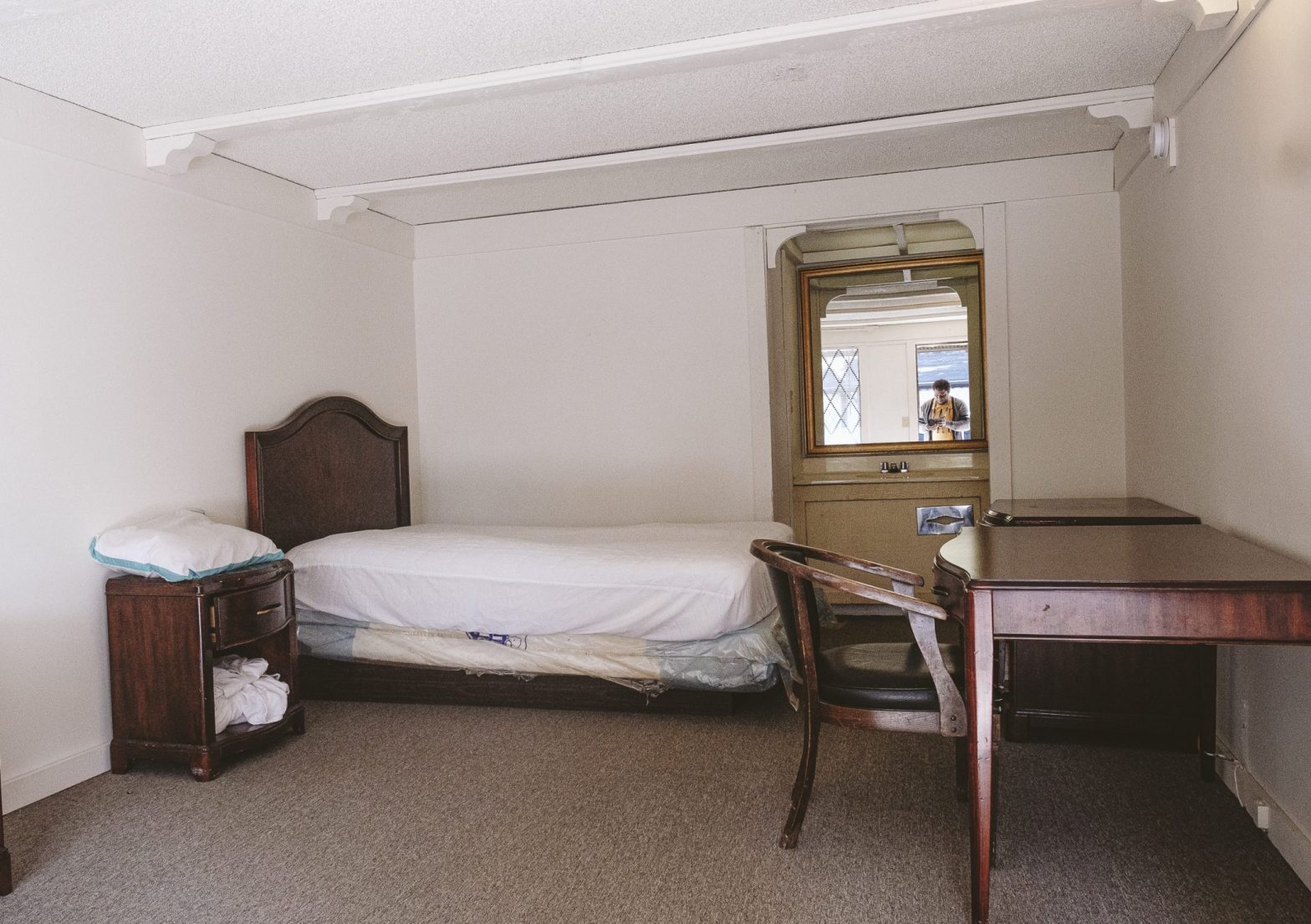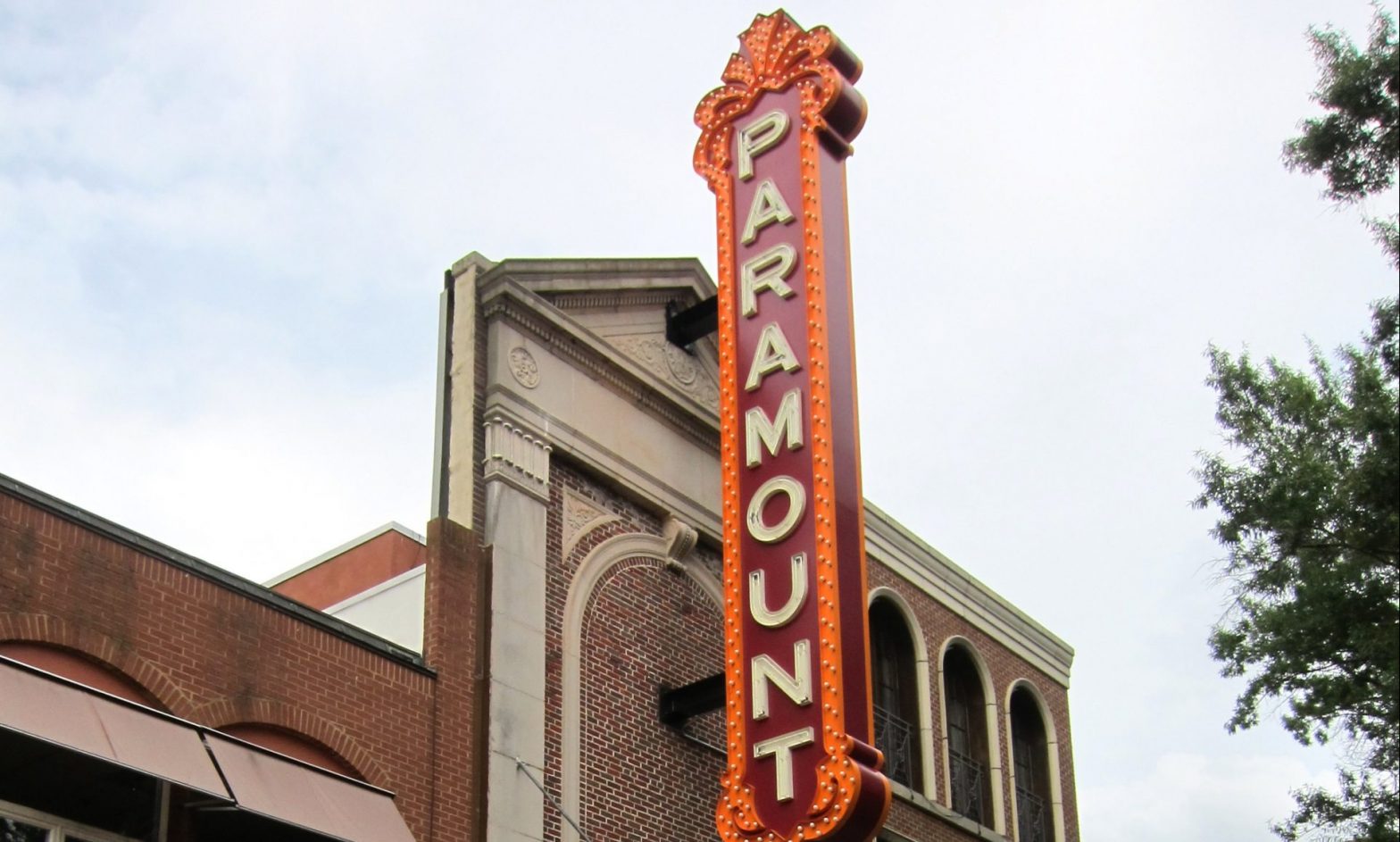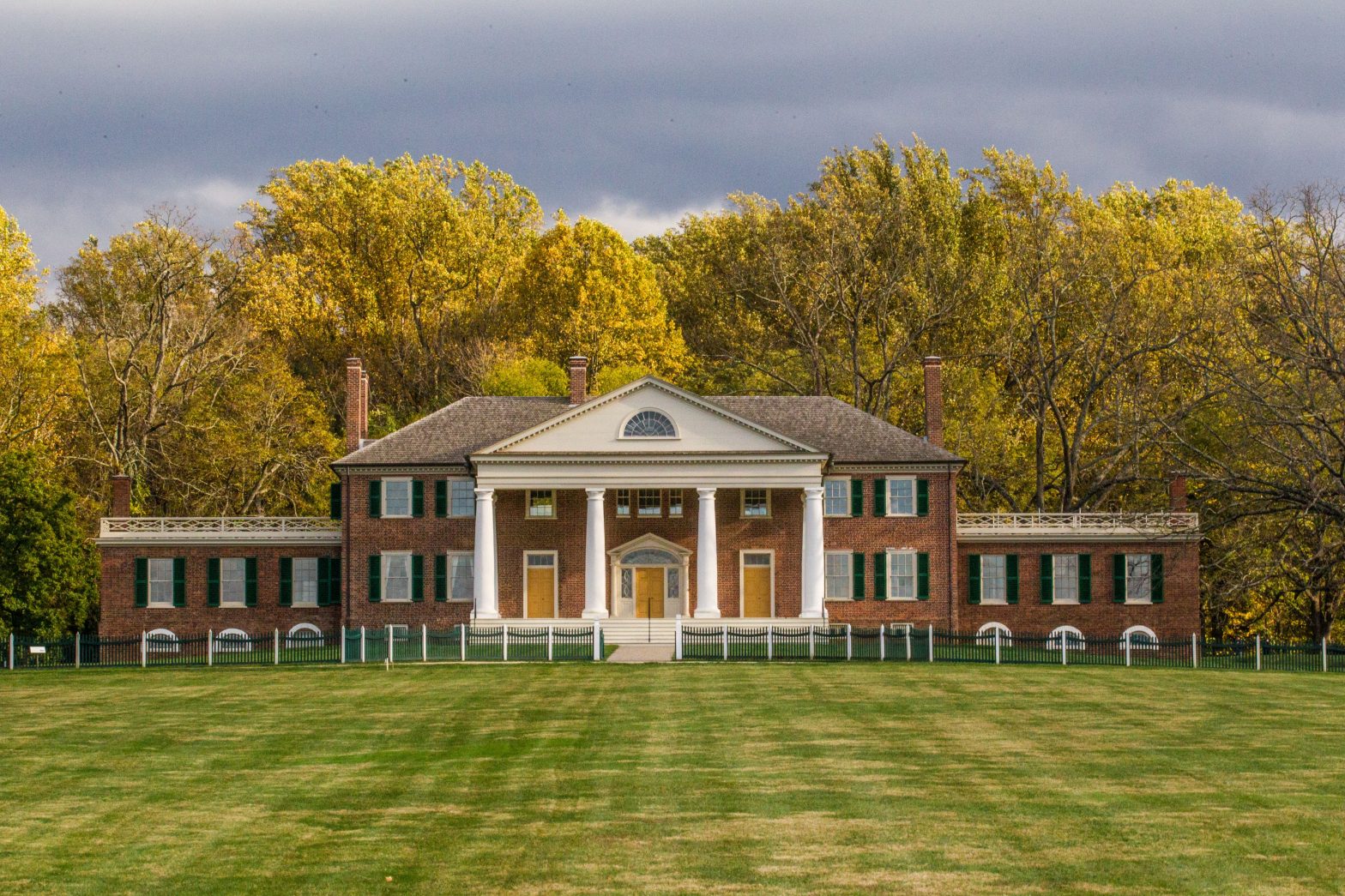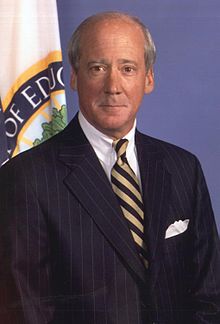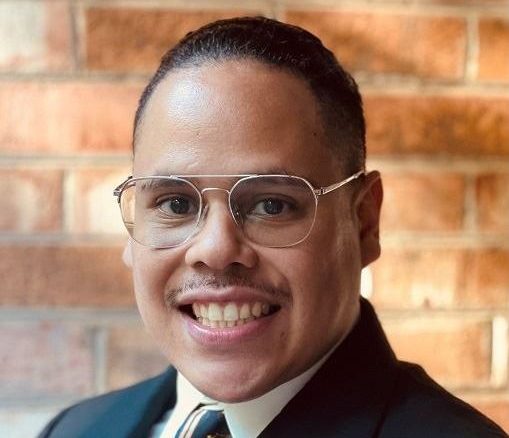In the paint
For Kris Bowmaster, a painting is more than a single moment, captured on canvas. It’s a place to go. An event. A happening.
Over 25 years ago, while on a Peace Corps tour in Lesotho during the height of the AIDS epidemic, Bowmaster found painting. “The scope of the suffering was so huge and the days were full of tragedy,” he says. “Painting was the touchstone that I came back to every evening. I still think of painting as a place to go, not a thing to do. It’s a fight where no one gets hurt.”
Years later, along with the rest of the world, Bowmaster found himself surrounded by a public health crisis once more when COVID-19 hit. His new exhibition, “The Ecstasies of Commitment,” on display at The Local, features 10 paintings that he created during the first two years of the pandemic.
“When starting the works that ended up in this show, I came across a series of images of dancers. One pair of dancers in particular caught my eye—they were so in tune with one another, it looked like ecstasy to me,” he says. “They were flying, jumping, catching, and being caught by one another. You can’t dance like that and be half committed.”
The exhibition’s title work, “The Ecstasies of Commitment,” is a collision of color and bodies. Bowmaster started the painting when times were tough. “My supplies were low and, like many people, my income was interrupted.” After gathering up old, broken, half-empty spray paint cans, he used a nail to burst the color out onto the canvas, then smeared on thick layers of paint using a pallet knife he inherited from a lost loved one.
This instinctive, spontaneous process was followed by a long period of intentional nurturing—slowly adding details with oil paints and gold leaf until it was done. The finished painting is full of movement. Sharp splatters of paint push up against fluid figures in a disjointed yet supportive embrace, so entwined it’s hard to tell where one starts and the other ends.
“Commitments are personal, sometimes shared, and often a long time coming,” says Bowmaster. “Whether it be to a practice or a person, I think of a commitment as a new beginning, something that requires more from you or me than before. I think for all of us, in life, you’re gonna need something more than yourself to find your way.”—Maeve Hayden
April Shows
Artistic Remedies for Creative Hearts 8767 Seminole Tr., Suite 101, Ruckersville. “Women and Their Dogs” by Hope Wood, and “The Elements: Wood, Fire, Metal, Water, Earth and Air,” an ARCH members exhibition.
Atlas Coffee 2206 Fontaine Ave. “Testing The Waters,” a joint show by Nathaniel Rogers and Kris Bowmaster. Through April.
Chroma Projects Inside Vault Virginia, Third St. SE. “Stillness” features works by Reni Gower. Through April 29.

Image courtesy of the artist.
Crozet Artisan Depot 5791 Three Notch’d Rd. “Artistry and Artisanship,” paintings and wire jewelry by Mae Stoll. Through April 30. Meet the artists at 1pm on April 9.
Crozet Library 2020 Library Ave. “‘98 to ’22,” paintings of acrylic, ink, and glass on canvas by Jerry O’Dell.
C’ville Arts Cooperative Gallery 118 E. Main St., Downtown Mall. “Natural Public Lands of Virginia,” works by landscape, wildlife, and nature photographer Ben Greenberg. Through April.
Firefly 1304 E. Market St. Works by Dana Wheeles.
High Tor Gear Exchange 1717 Allied St. “Close to Home—An Environmental Art Exhibit,” works inspired by environmental sustainability, with the intention of connecting artists and environmentalists alike to create conversations about the urgency of climate change.
Jefferson School African American Heritage Center 233 Fourth St. NW. “Memory Quilts” displays nine quilts by Deloris Thomas that explore the relationship between color and form, and utilize old patterns, some associated with the Underground Railroad. “Picturing Climate Justice” features photographs, artwork, and maps alongside interactive data tools to shed light on the nature of climate injustice in our region. Through June 4 and May 28, respectively.
Les Yeux du Monde 841 Wolf Trap Rd. “Turn on the Light!” is a memorial show in honor of Lyn Bolen Warren. The group exhibition features light-filled and Lyn-inspired work from artists Warren represented throughout her career. Through April 30.
The Local 824 Hinton Ave. “The Ecstasies of Commitment,” paintings by Kris Bowmaster. Through April.
Loving Cup Vineyard & Winery 3340 Sutherland Rd., North Garden. “There is Beauty in Color,” works by Sara Gondwe using the melted crayon technique. Through May 29.
McGuffey Art Center 201 Second St. NW. In the Smith Gallery, “redux: revisit, revive, remake,” ceramics by Rebekah Wostrel and fiber works by Lotta Helleberg. On the first floor, “Outflow” by Zoe Edgecom explores local wastewater treatment plants, and “Creation” features abstract paintings by Etta Harmon Levin. On the second floor, “INcompleteness” features photographs by Rob de Bara. In the Associate Gallery, “Gardens” showcases works by McGuffey’s Associate artists. Through May 1.
McIntire Connaughton Gallery Rouss and Robertson Hall, UVA Grounds. “2 Plein Air Painters,” oil on linen, oil on linen panel, and oil on canvas by V-Anne Evans and Lee Christmas Halstead. Through June 13.
New City Arts 114 Third St. NE. “Diaspograms: The Symbology of Black Life,” a celebration of the Black experience distilled as imagery by Kweisi Morris.
PVCC Gallery 501 College Dr. In the North and South Galleries, the Annual Student Exhibition and Eighth Annual Chocolate Chowdown features works by student artists in diverse mediums, with decadent amounts of chocolate available to enjoy. Opens April 15.
Random Row Brewing Co. 608 Preston Ave. A. “Old and New,” works by Julia Kindred. Through April 30.
Second Street Gallery 115 Second St. SE. In the Main Gallery, “Pathways,” layered mixed-media paintings by Francisco Donoso. In the Dové Gallery, “Daughterland” by Meesha Goldberg.
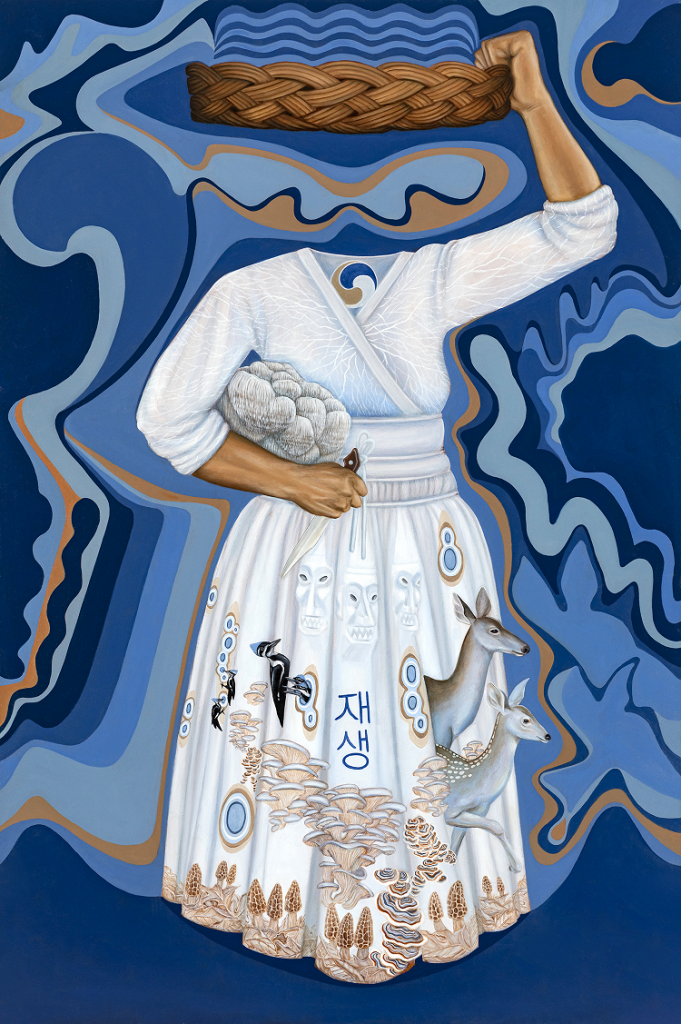
Image courtesy of the artist.
Sentara Martha Jefferson Hospital 500 Martha Jefferson Dr. In the second floor Lab hall, paintings by Randy Baskerville. Through April.
Shenandoah Valley Art Center 126 S. Wayne Ave., Waynesboro. In the Invitational Gallery, works by Paige Speight. In the Member’s Gallery, “Black,” by SVAC members in a variety of mediums.
Studio IX 969 Second St. SE. “The Prolyfyck Shape of Art” features works from student artists of the Blue Ridge Juvenile Detention Center as part of the Prolyfyck Exhibition Series. Through May 1.
Tandem Friends School 279 Tandem Ln. The Charlottesville Area Quilters Guild Quilt Show, with over 180 quilts on display, plus shopping and demos. April 9 and 10.
Unitarian-Universalist Church 717 Rugby Rd. Paintings by Matalie Deane. Through April and viewable online.
Vault Virginia 300 E. Main St. “Nature, Us, and The Future,” a female artists’ group exhibition with works by Christen Yates, Judith Ely, Karen Rosasco, Lesli DeVito, Phyllis Koch-Sheras, and Susan Patrick. Through April 15.
Visible Records 1740 Broadway St. “On the Palette of Scarlet,” photographs by Fumi Ishino, and “Future Elsewhere,” an exhibition by Dana Washington-Queen. Through April 15 and opens April 22, respectively.




